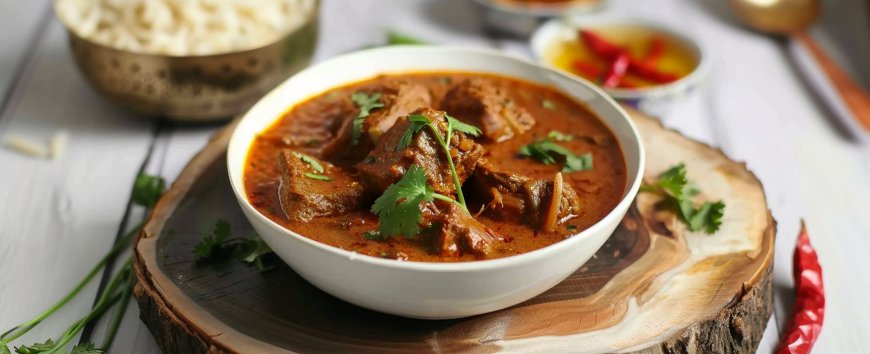Food Wars: Why Lahori Nihari Is Objectively Superior to Karachi Nihari
Few food rivalries in Pakistan stir as much heated debate as the battle of Lahori Nihari vs. Karachi Nihari. It’s not just about a dish, it’s about pride, tradition, and identity.

Few food rivalries in Pakistan stir as much heated debate as the battle of Lahori Nihari vs. Karachi Nihari. It’s not just about a dish; it’s about pride, tradition, and identity.
The Origins: A Tale of Two Cities
Before we start throwing around culinary verdicts, it’s only fair to acknowledge where nihari comes from. The dish traces its roots back to Mughal Delhi, where it was eaten at dawn ("Nihar" means morning). When many families migrated to Pakistan in 1947, nihari traveled with them.
Karachi Nihari evolved with the migrants, often richer, spicier, and heavily garnished.
Lahori Nihari, meanwhile, was adopted and adapted in Punjab, and over the years, Lahoris added their own flair, focusing on depth of flavor and a slow-cooked finesse. Both versions are delicious, but one clearly wins in the long run.
Why Lahori Nihari Takes the Crown
Now let’s break down, point by point, why Lahori Nihari is simply objectively superior.
1. The Broth That Rules Them All
Lahori Nihari has a silky, slow-cooked broth that balances spices and meat juices. Instead of being aggressively fiery (like Karachi’s), it leans into layered depth, letting you taste every note, from cumin to cardamom.
Karachi’s version? Often an over-spiced punch in the face. Great for those who want a challenge, but if you’re looking for complexity, Lahore has already won.
2. Meat That Melts in Your Mouth
Lahori Nihari is cooked low and slow, often overnight, until the beef shank is so tender it practically surrenders to your spoon. Karachi Nihari, while tasty, often prioritizes spice over softness. And let’s be real, what good is nihari if the meat fights back?
3. The Legendary Tarka
Here’s where Lahore flexes. Right before serving, Lahori Nihari gets a desi ghee tarka (tempered oil), a sizzling splash of ghee infused with garlic and spices poured on top. The aroma alone could make a grown man tear up.
In Karachi, you’ll find ghee too, but Lahoris treat it like an art form. That final flourish is what elevates the dish from great to unforgettable.
4. Garnishes Done Right
Karachi Nihari is famous for piling on garnishes: ginger, lemon, coriander, chilies. Sounds fun, but often it feels like the toppings are doing the heavy lifting.
Lahori Nihari doesn’t need that much cover-up. A little ginger and lemon are enough to enhance rather than mask the already-perfect broth.
5. The Authentic Vibe
Lahore has Haji Nihari, Waris Nihari, and countless street-side joints where recipes are guarded like family heirlooms. Walking through Lahore’s nihari spots feels like stepping into a food documentary. Karachi has its legends too, but there’s something unmatched about sitting in old Lahore at dawn, tearing naan into a steaming bowl of nihari.
A Bite-by-Bite Comparison
| Feature | Lahori Nihari | Karachi Nihari |
|---|---|---|
| Flavor Profile | Balanced, deep, aromatic | Spicy, sharp, in-your-face |
| Meat Texture | Fall-off-the-bone tender | Sometimes tougher, spicier gravy focus |
| Cooking Style | Slow-cooked with ghee tarka | Heavily spiced, quicker |
| Garnishes | Minimal, complementary | Heavy, often overpowering |
| Experience | Heritage-rich, soulful | Fiery, bold, but inconsistent |
Taste Tests & Blind Test Results:
A blind taste test was conducted by local food critics and chefs to settle the debate once and for all. The tasters were asked to sample both versions without knowing which city each dish came from. Here are the results:
-
Lahori Nihari scored a 9/10 for its rich, balanced flavor profile and tender meat.
-
Karachi Nihari scored a 7/10 for its spiciness, but the meat was described as "tougher" and the spice levels were "overpowering" for some tasters.
In the blind test, Lahori Nihari emerged as the clear favorite, with many tasters commenting on the "depth of flavor" and "slow-cooked perfection."
Chef Quotes:
Chef Imran Malik of Lahore’s famed Waris Nihari says, "Nihari is an art for us, not just a dish. It’s about patience, slow cooking, and the perfect tarka to bring out the deep, rich flavors that define Lahori cuisine."
Chef Saeed Khan from Karachi’s Shahi Nihari counters, "Karachi Nihari is for the bold, the adventurous. It’s spicier, quicker, and packs a punch. It’s a late-night street food tradition, and we love it for that."
Ingredient Comparison:
-
Lahori Nihari: Uses slow-cooked beef shank, with minimal spices such as cumin, cardamom, cinnamon, and cloves. The dish is finished with a desi ghee tarka of garlic and ginger.
-
Karachi Nihari: Uses similar base ingredients but often incorporates extra spices such as red chili powder, garam masala, and a variety of garnishes (lemon, green chilies, etc.). The meat is cooked faster and the gravy is thicker and spicier.
Why Foodies Secretly Agree (Even in Karachi)
Here’s a little truth bomb: many Karachi foodies sneak in a trip to Lahore just to experience authentic Lahori nihari. Even if they don’t admit it out loud (because, you know, civic pride), their taste buds know the truth.
Why? Because Lahori Nihari is universal. It caters to spice-lovers and comfort-food seekers alike. Karachi Nihari, while bold, can be a little niche; it’s not everyone’s cup of… broth.
The Emotional Factor
Food isn’t just about taste, it’s about memory and comfort. And Lahoris have turned nihari into more than a dish; it’s a ritual. Families gather around steaming bowls on weekends, often with fresh naan straight out of the tandoor. It’s not just eaten, it’s celebrated.
Karachi Nihari is often a late-night street food, still amazing, but it doesn’t carry the same cultural weight. Lahore made nihari personal.
Why This Debate Will Never End
Of course, Karachiites won’t accept defeat that easily. For them, nihari is about fire, punch, and bragging rights. And to be fair, the rivalry is what keeps the dish alive and evolving. If everyone agreed on one winner, where’s the fun in that?
Still, deep down, when it comes to richness, balance, and legacy, Lahore wins the gold medal.
The Friendly Conclusion
Let’s be real, Nihari, in any form, is one of Pakistan’s greatest culinary treasures. But if you had to pick just one version to put on the global food map, the Lahori Nihari wins hands down.
Its richness, balance, and cultural depth make it more than just food—it’s an experience, a tradition, and a taste of Lahore’s soul.
Over to You
Karachiites, don’t come at me with your parathas just yet. I get it, your Nihari has spice, speed, and late-night charm. But deep down, you know the crown belongs to Lahore.
What do you think? Is Lahori Nihari the ultimate winner, or does Karachi deserve more credit?
Frequently Asked Questions (FAQ)
Q1: What makes Lahori nihari different from Karachi nihari?
Lahori nihari focuses on a slow-cooked, balanced broth with tender meat and a signature ghee tarka. Karachi nihari tends to be spicier and heavier on garnishes.
Q2: Is Lahori nihari less spicy than Karachi nihari?
Yes. Lahori nihari balances spice with depth of flavor, while Karachi nihari often leans toward extra heat.
Q3: Where can I find the best nihari in Lahore?
Some of the most famous spots include Haji Nihari, Waris Nihari, Muhammadi Nihari, and countless old-city dhabas that carry decades of tradition.
Q4: Why is nihari eaten in the morning?
Historically, it was served after morning prayers in Delhi and later in Lahore. Its name comes from "Nihar," meaning morning. Today, people eat it any time, but Lahoris still swear by a breakfast nihari.

 Ayesha Mir
Ayesha Mir